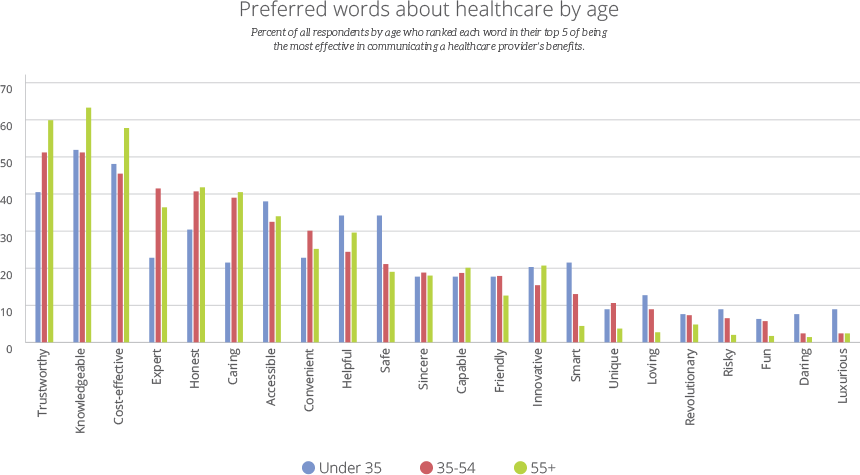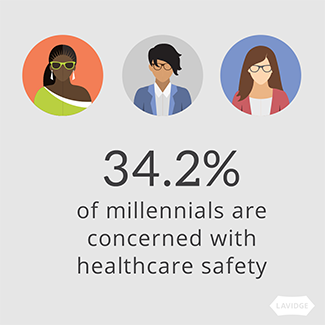Need fresh thinking? Help is a few keystrokes away.
Words Matter: target patients by age | healthcare advertising agency
This article is a brief abstract of our exclusive study that takes the guesswork
out of healthcare advertising and marketing.
Download the complete 2017 Southwest Healthcare Marketing Report
In healthcare marketing, it’s true that one size doesn’t fit all. But that’s been true for a long time.
Gone are the days of creating one message for all audiences. Savvy marketers are creating different messages for multiple target markets. And that means truly understanding what will connect with each audience. That’s a tall order.
To help healthcare marketers solve this puzzle, LAVIDGE commissioned a study in which we asked consumers what healthcare words they believed would be most effective in communicating a healthcare provider’s benefits. Then we drilled down and separated respondents by age. The result is fascinating and extremely useful.

See the chart above and you’ll notice that all ages ranked knowledgeable, trustworthy and cost-effective at the top. This consensus across generations offers the kind of remarkable consistency marketers desire. Target audiences often present muddled data that leads to false assumptions and failed branding and marketing campaigns. Despite the harmony in our data, it is interesting to note that consumers 55 and older value these attributes more than younger audiences.
While people under 35 are in agreement about the top benefit words, they show a unique affection for safe, helpful and accessible. These are millennials, so it’s understandable that they desire healthcare professionals who can help them make sense of often challenging and confusing decisions. Marketers and brand managers who want to reach consumers in a younger target audience would be wise to prioritize exceptional customer service characterized by helpfulness and making complicated matters appear clear and relatable.
Similarly, people with a high school graduation or less also ranked helpful very high. And as education rises, helpful becomes less attractive. This is a strong signal that less-educated consumers are having trouble navigating our healthcare system. Communicators targeting this market should ensure their marketing messages are easy to understand and should ramp up customer service.
It’s instructional to see that those under 35 also rank safe significantly higher than older respondents. We wouldn’t have predicted that young people would be worried about how healthcare safety might affect their mortality, but 34.2% of them ranked safe as one of their top five preferred words. To understand their motivation and concerns, it’s instructional to listen to them:
- “When talking about healthcare, I would be willing to drive far and pay a lot as long as I know my safety is the most important consideration by the healthcare facility.”
- “Most people, above all else, want reassurance that they will be safe in a healthcare environment.”
- “Most medical things or procedures have some possible undesirable effects. Expecting a treatment to be safe makes me more likely to try it.”
In hindsight, we shouldn’t have been surprised that millennial respondents have expressed a concern about safety. According to Investopedia’s Dan Moskowitz, “Millennials aren’t just risk averse, they are the most risk averse generation since The Great Depression.” A 2014 study by The Brookings Institution cites millennials for their historically low stock market investments. And a 2014 report by UBS Investor Watch says, “Millennials hold more than half of their assets in cash (52%) with less than one-third of their assets (28%) in equities. This is directly counter to traditional long-term investment allocation advice.” Other age groups have only 23% of their savings in cash.
With millennials proving themselves so risk averse in financial matters, it’s understandable their conservative nature would extend to healthcare. No wonder they are anxious about safety.
BIO: Stephen Heitz is LAVIDGE’s Managing Director, Interactive. Tim Trull is the agency’s Managing Director, Strategy.



